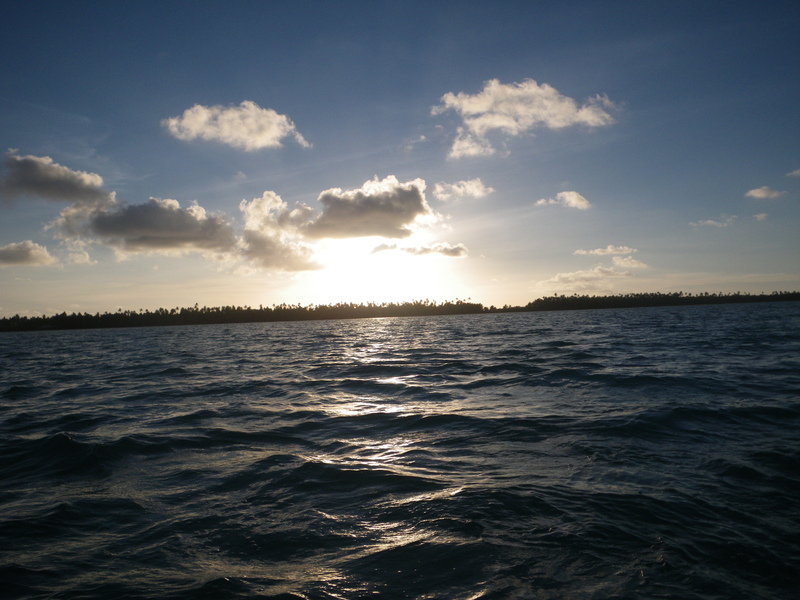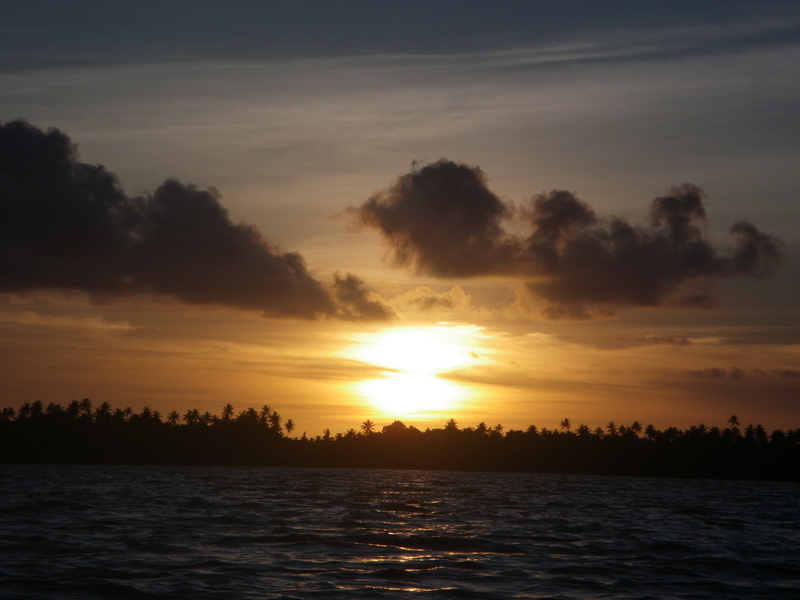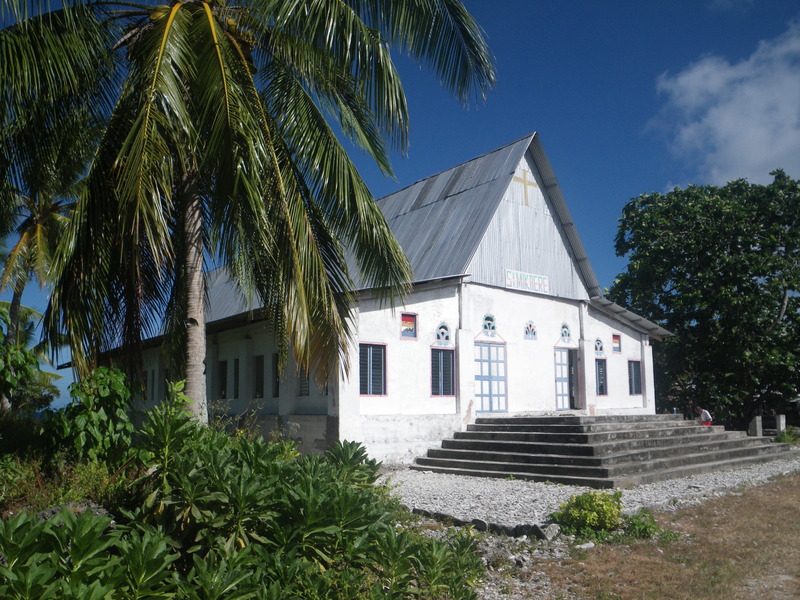
Today is Sunday, so we got the day off from working on the boat.
An atoll is usually a ring-shaped island around a central lagoon. Many many years ago, there was probably a volcano here. Then the volcano eroded and washed into the sea, but the coral that was growing on the underwater slopes of the volcano kept growing, keeping what is left of the island protected from the waves. Where the volcano was, is now a shallow lagoon.
The ring around the lagoon has a channel (opening) in it. The tides fill and empty the lagoon through the channel, creating strong currents.
There is a ferry boat going across the channel several times per day. It is the same small aluminum landing craft that helped unload passengers from the Kwai.
One of the people working on the Kwai decided to go to Catholic mass, so I got to see the catholic church (I did not go to mass). It is very simple and rather nice.

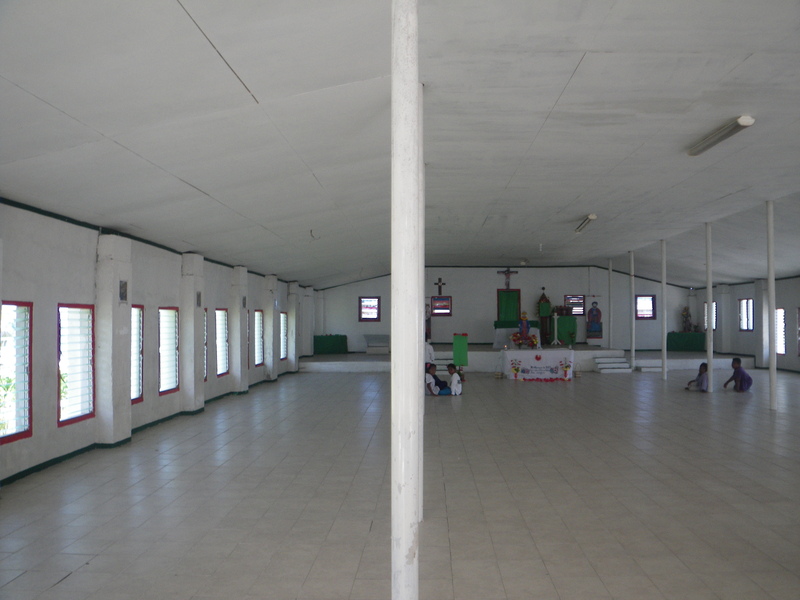
These little girls look like they will dance during the mass.
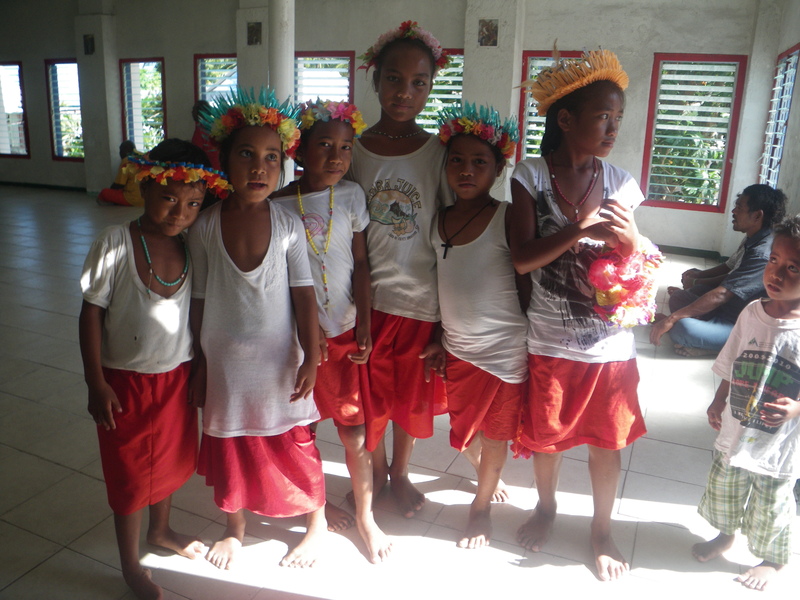
Most villages on Fanning have one or more Maniaba, communal houses. Each maniaba can serve as a meeting place, a school, a church, or perhaps other purposes. I saw some very focused young men in a maniaba, and asked what they were doing. They were taking a placement test.
This maniaba is visible from the ocean. It is not finished. I was told there was some disagreement among the builders, and it is not likely the maniaba will be completed.
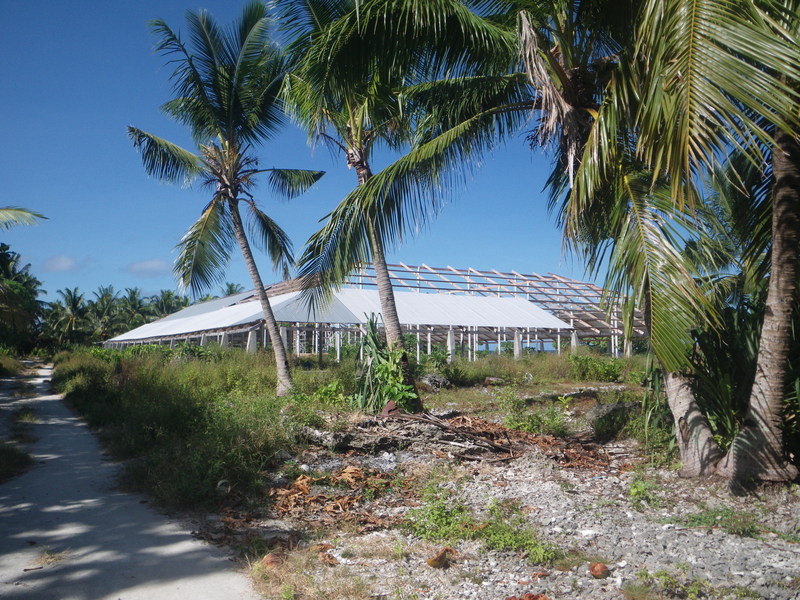
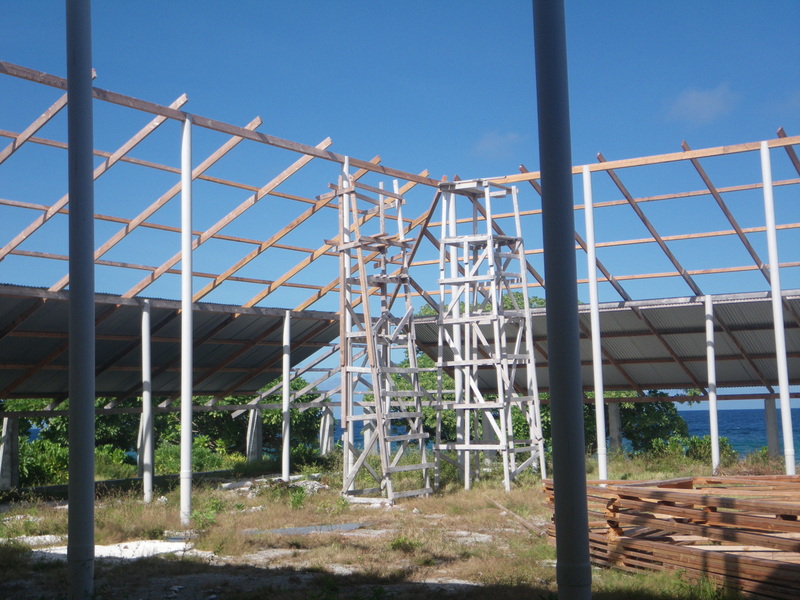
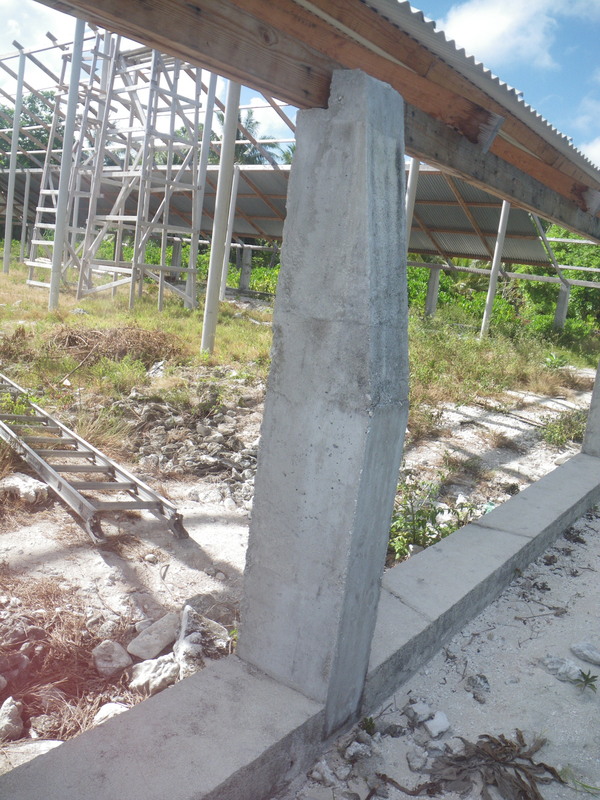
I took a walk on the ocean side of the atoll. It is a rocky beach made up of coral washed ashore by the waves. I guess it is partly in this way that the coral helps preserve, and perhaps grow, the atoll. I found it quite beautiful.



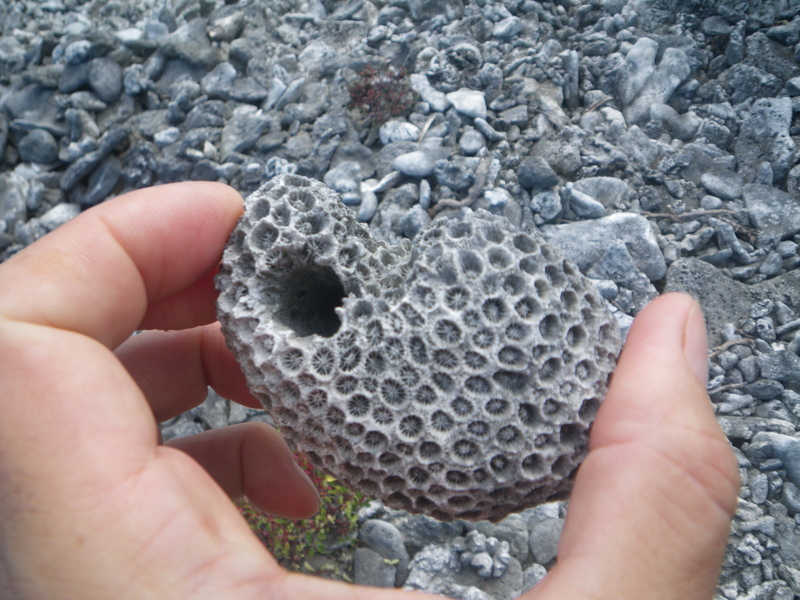
The brush at the side of the beach was mostly Naupaka, with some beach Heliotrope, coconuts, and smaller plants.

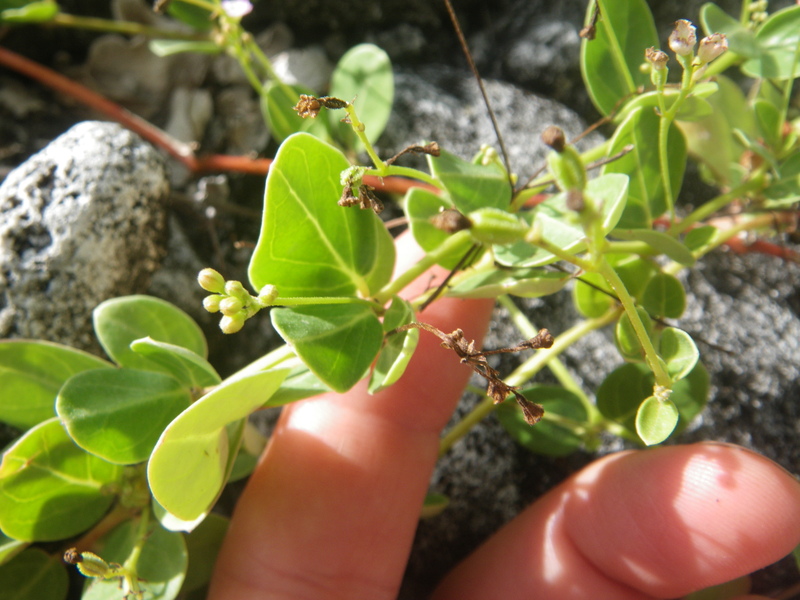
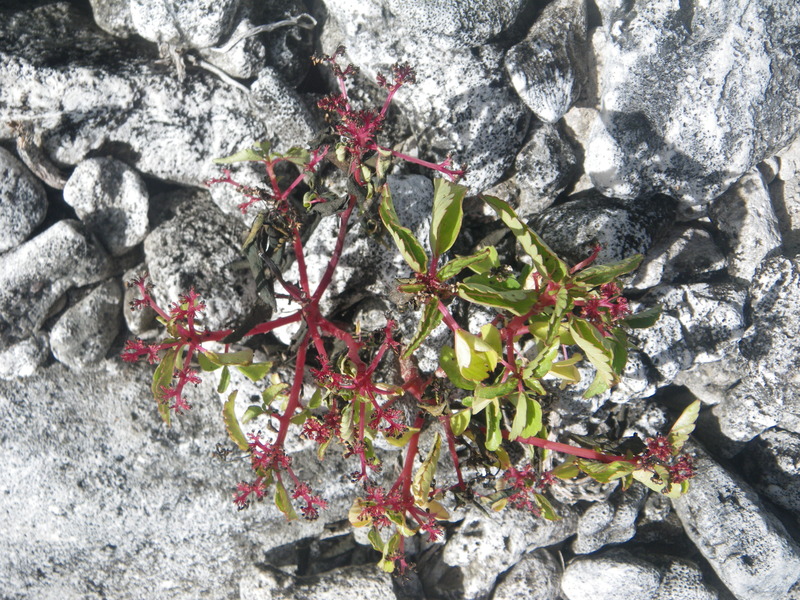

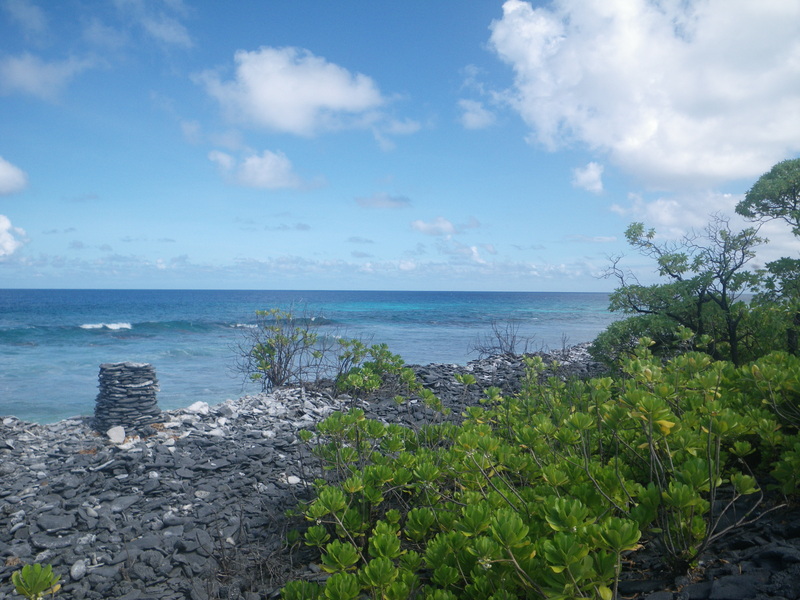
There were no people on the beach, and I decided to go through the brush towards the lagoon. Eventually I found a path. The path led me through some fields, including a soccer field.


All of a sudden my feet found I was walking in mud!! This village has some plants of Papai, a giant variety of Taro, which grows well in the mud. The lowest and wettest parts of this atoll are frequently planted with papai.
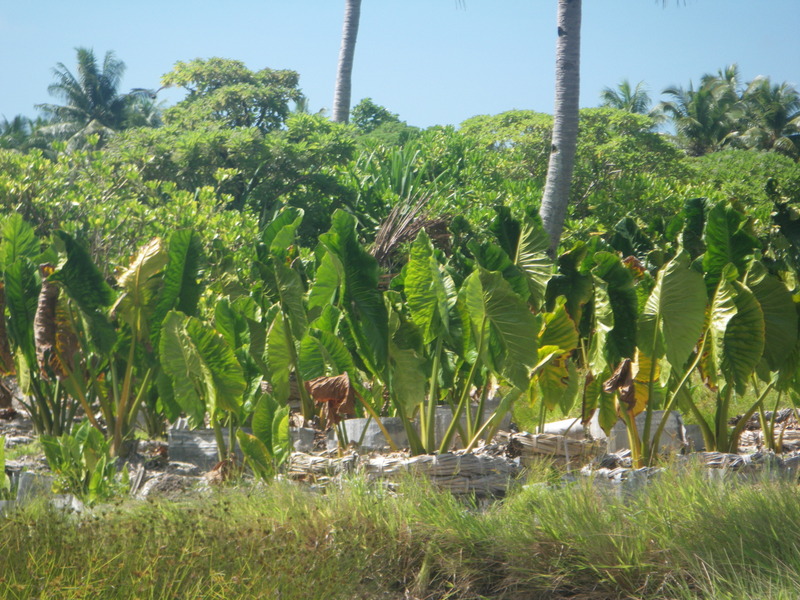
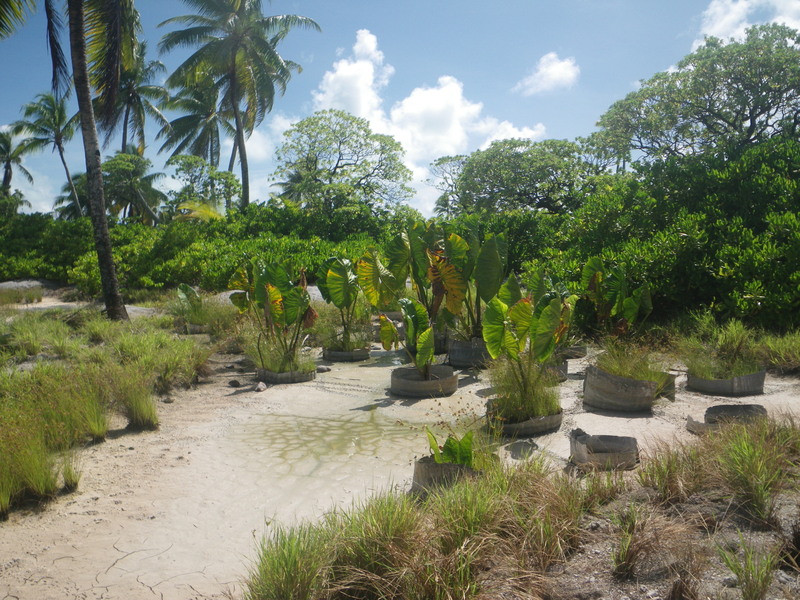
Near the papai I saw several frigate (Iwa) birds, which I always think look beautiful, their wings looking like prehistoric flying reptiles. In Hawaii the frigates often steal food from smaller seabirds, but I did not see that behavior here -- I did not see very many smaller seabirds.
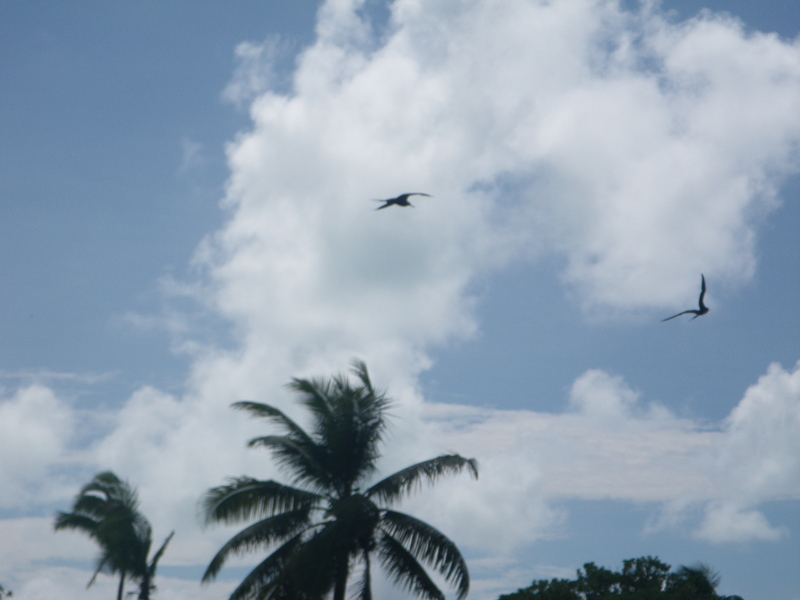
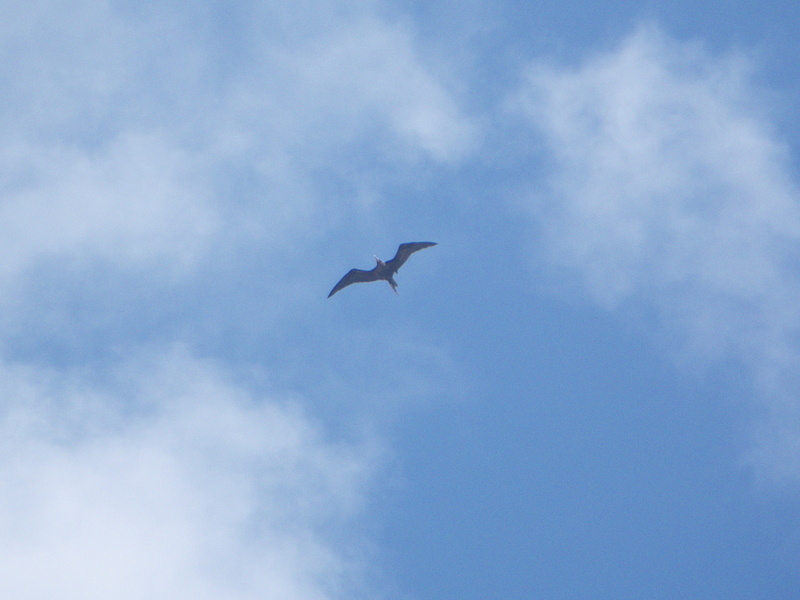
The houses in this village have traditional thatched roofs, but the maniaba has a roof of corrugated iron ("tin roof"). The two styles seem to be used interchangeably. I guess the iron is more expensive, but the coconut thatching is more labor intensive.
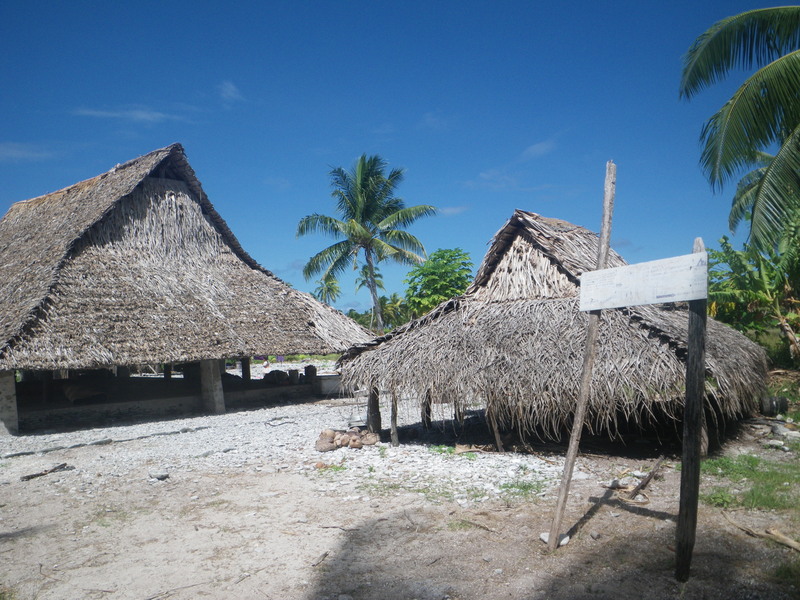
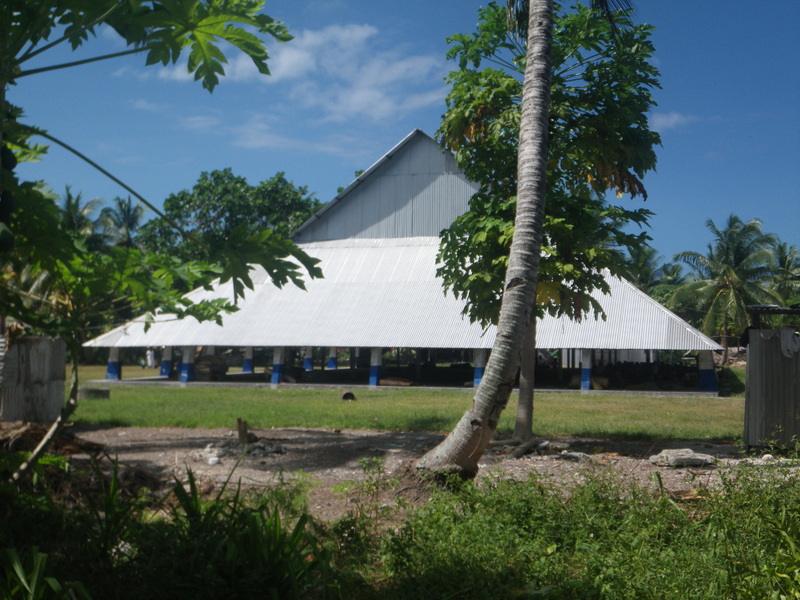
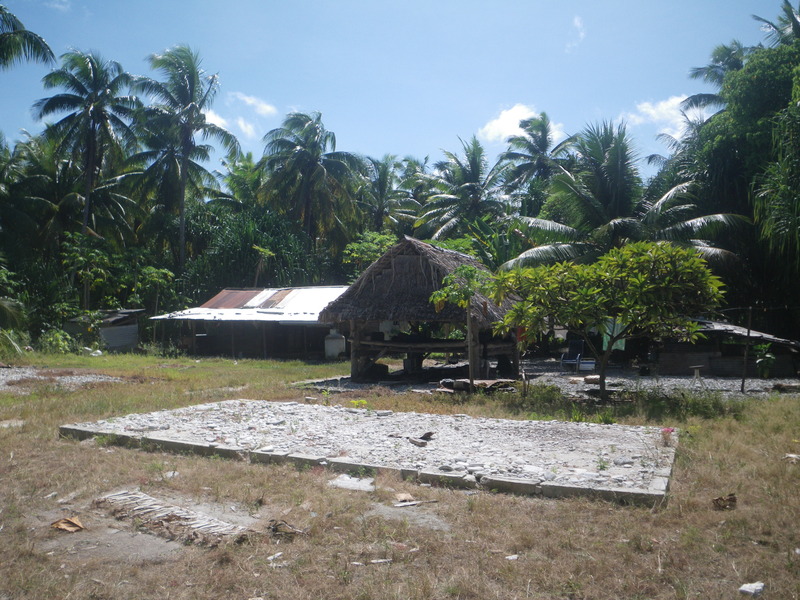
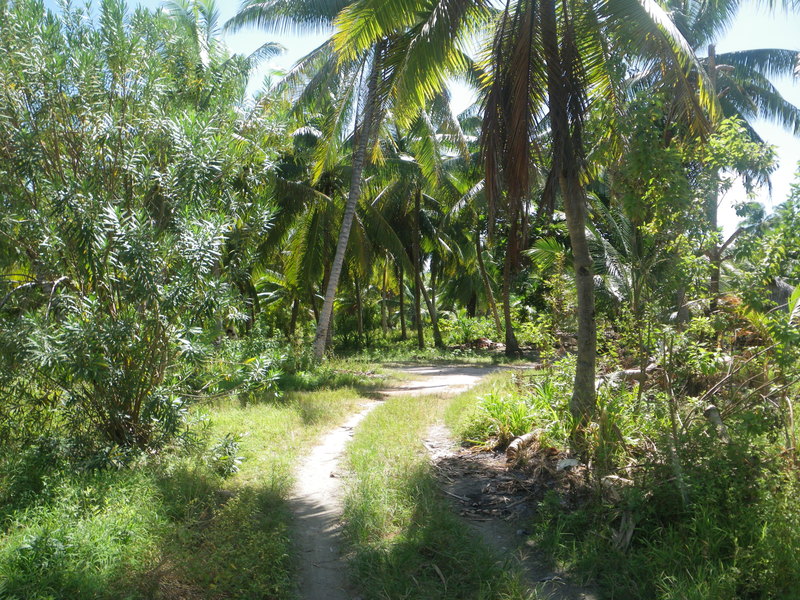

Finally, I found the main road going around the atoll.

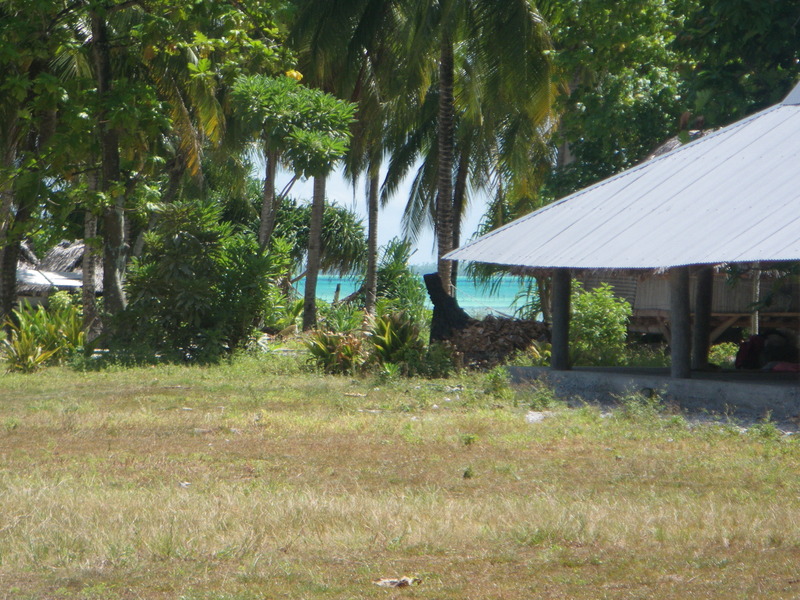
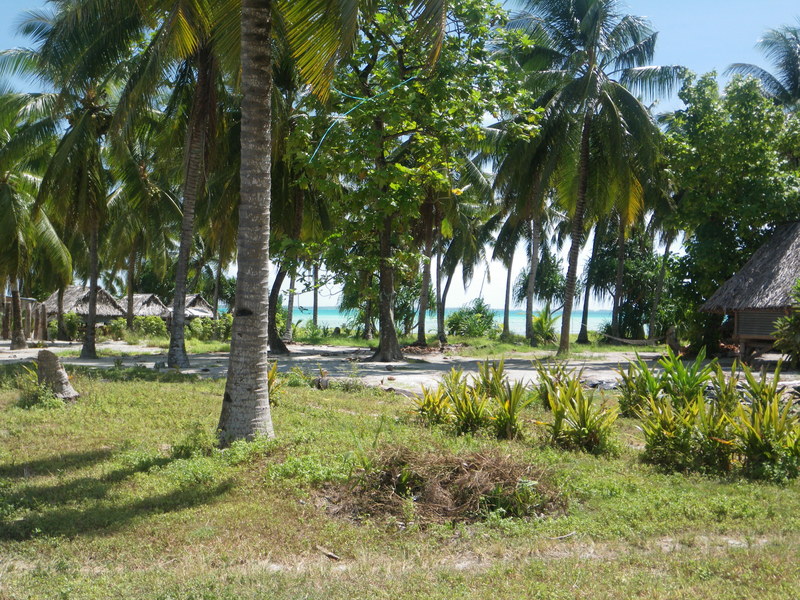
NCL is Norwegian Cruise Lines, which for a while ran a cruise from Fanning to Honolulu. I don't know if they built this school, but the school was named after them.
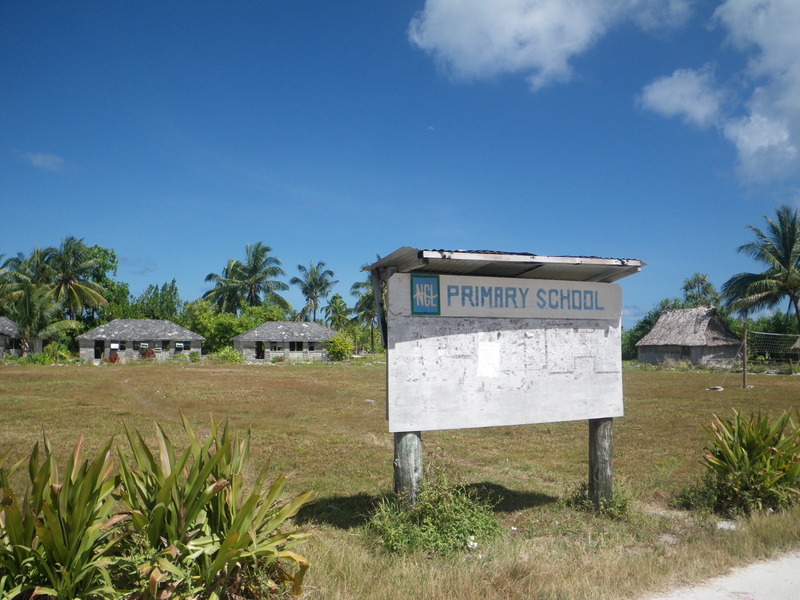
Where the main road goes by the lagoon, I found sticks planted in the sand, in rows. I think they are for growing clams. I have seen similar structures in Italy.
I smelled a strong smell on the shore nearby, I think from the harvested clams.

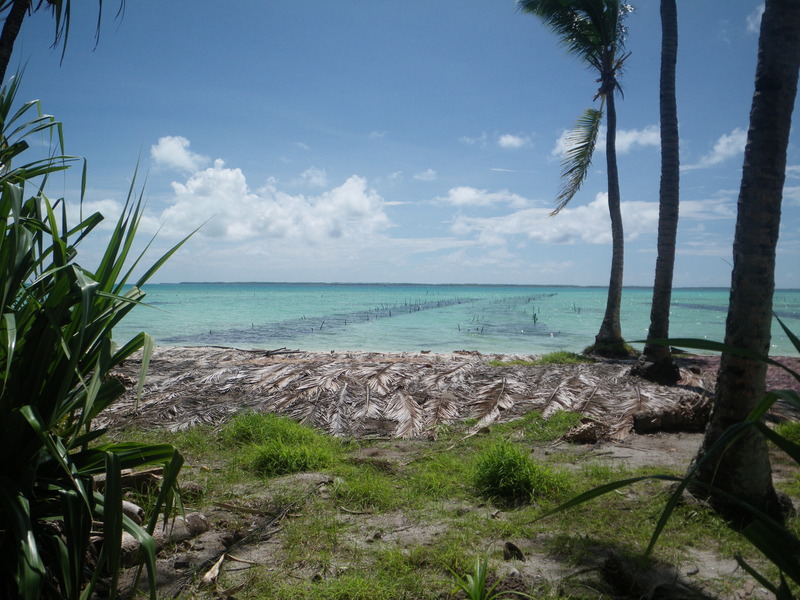
This really is a tropical atoll!!! The colors in the lagoon are beautiful.
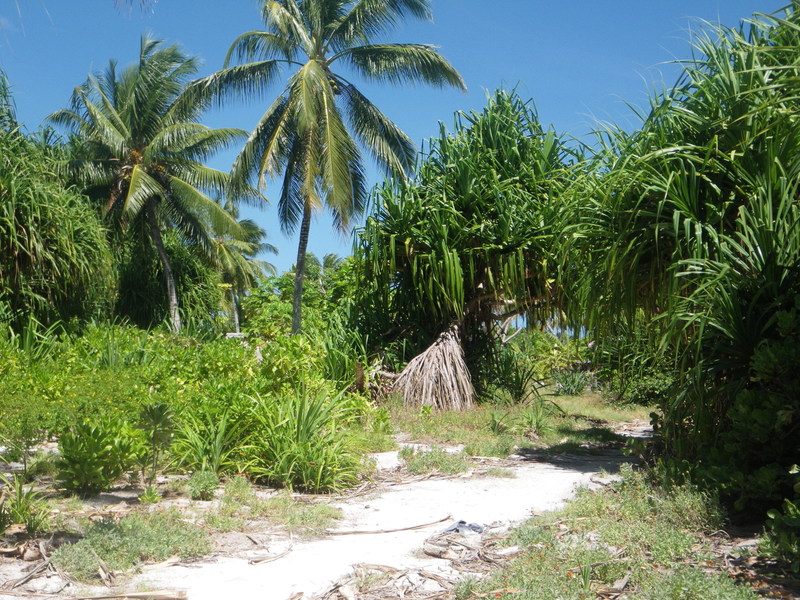
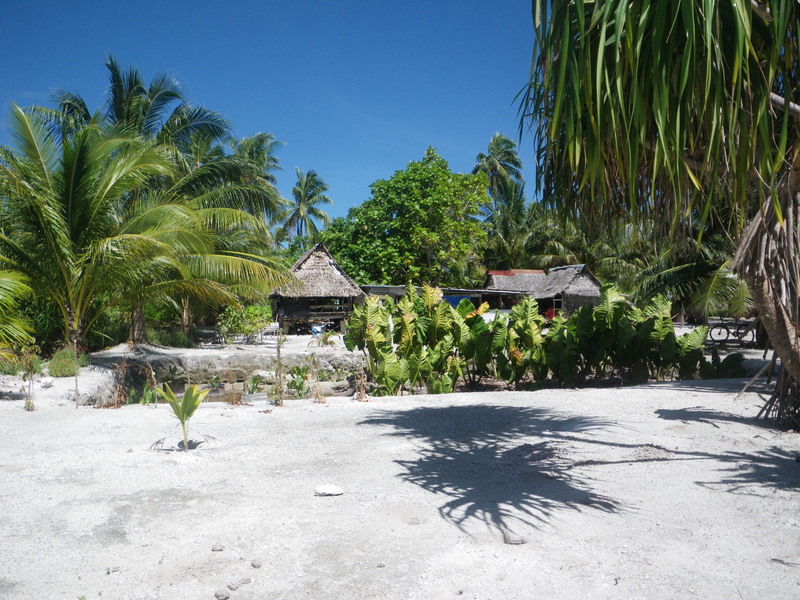
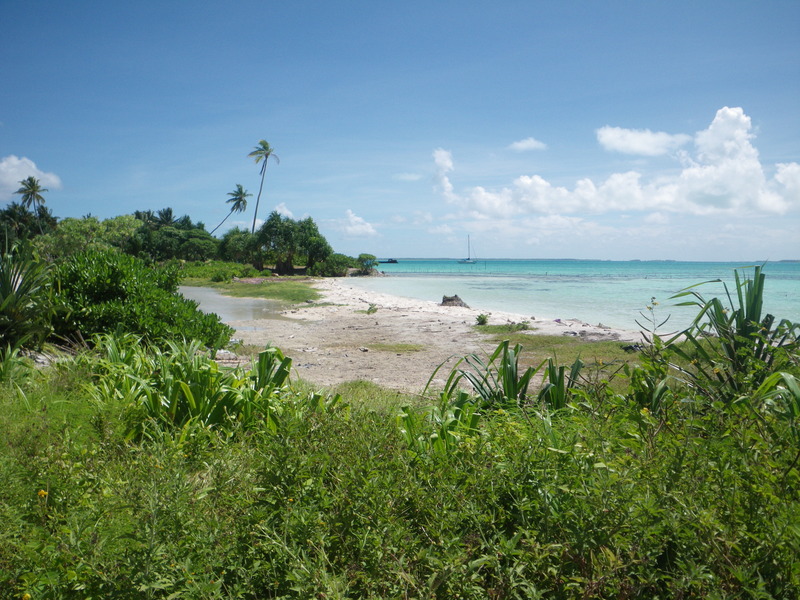
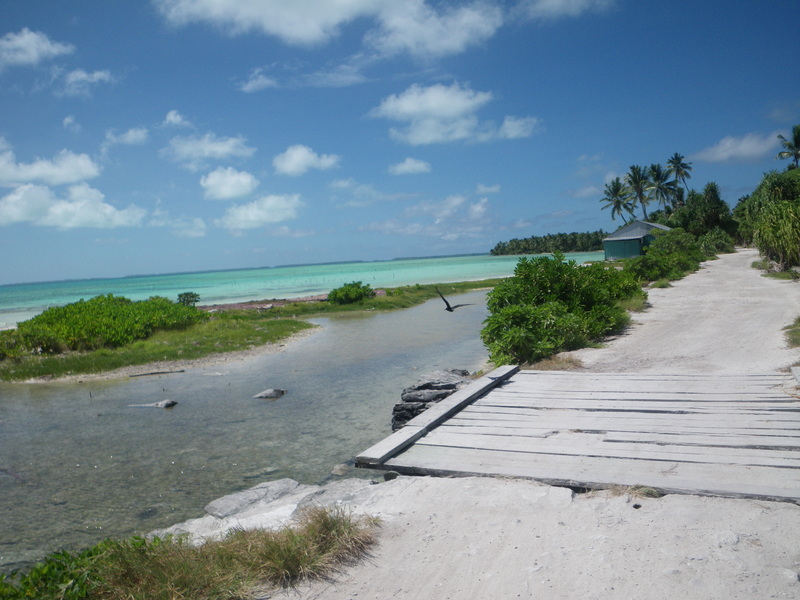
In a pond I found a bird that the locals identified as Io. We have a shark expert on the Kwai, who is going to spend two-three months on Washington (Teraina) island studying sharks. He knows a lot about biology, so I asked him to identify the io, and although he had some ideas, he was not sure what species it was.
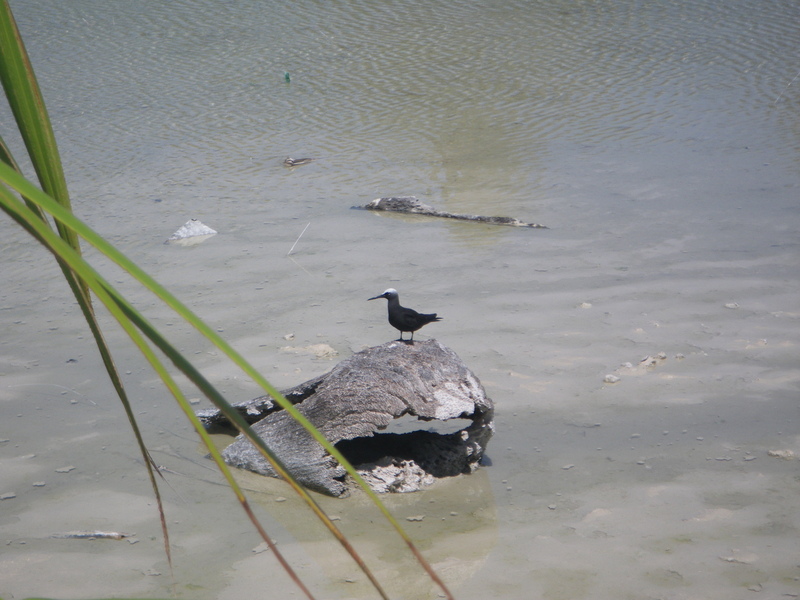
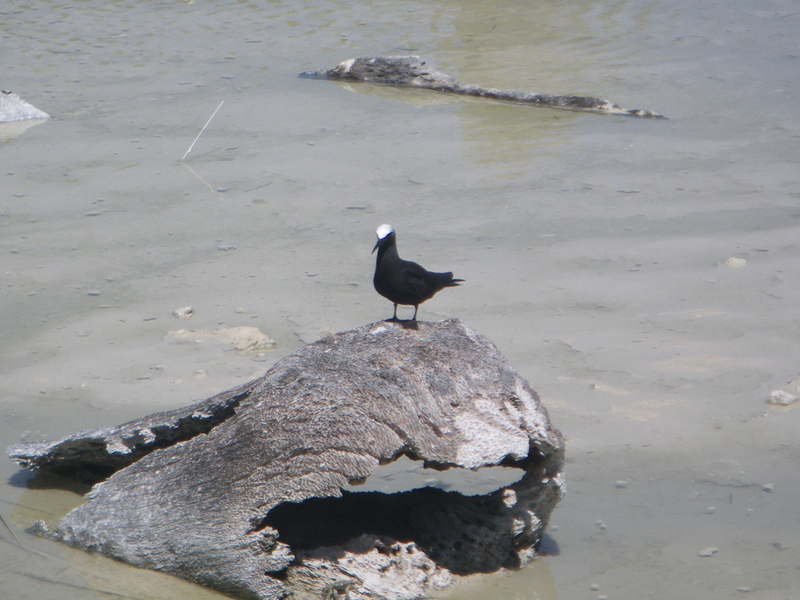

The Kwai looks good in its anchorage.

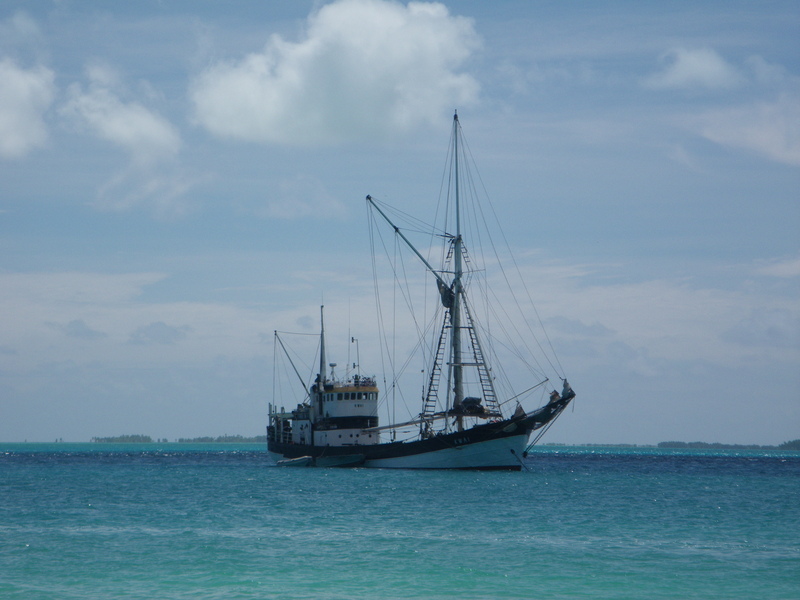
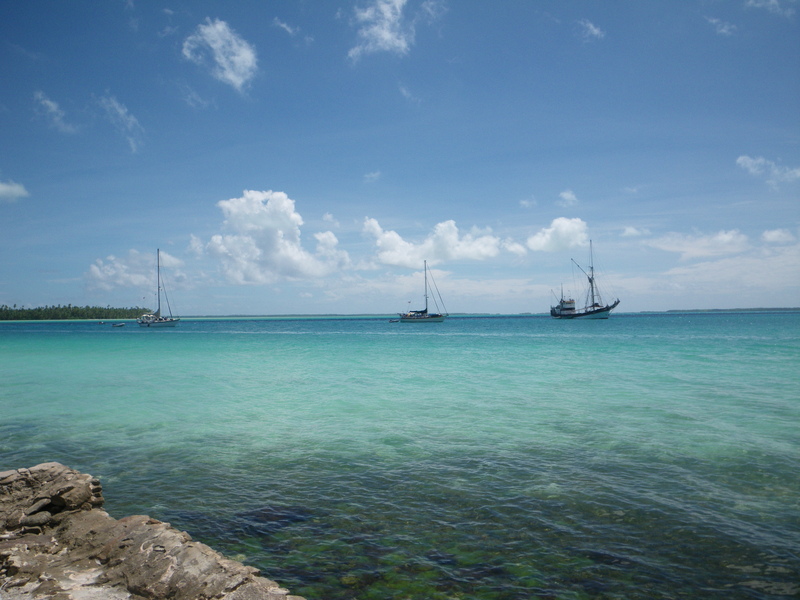
In the afternoon, I was invited to join the ship's mechanic, Ben, to go look at a wind generator that was not generating electricity. Ben is from Holland but has lived a long time in Portugal, and in Portugal worked installing solar and wind power generators.
The location of the wind generator was described as "The catholic mission across the lagoon. Look for the pier".
We took the second of the Kwai's dinghies, a wooden rowboat, across the lagoon. Along the way, we stopped to harvest some coconuts.
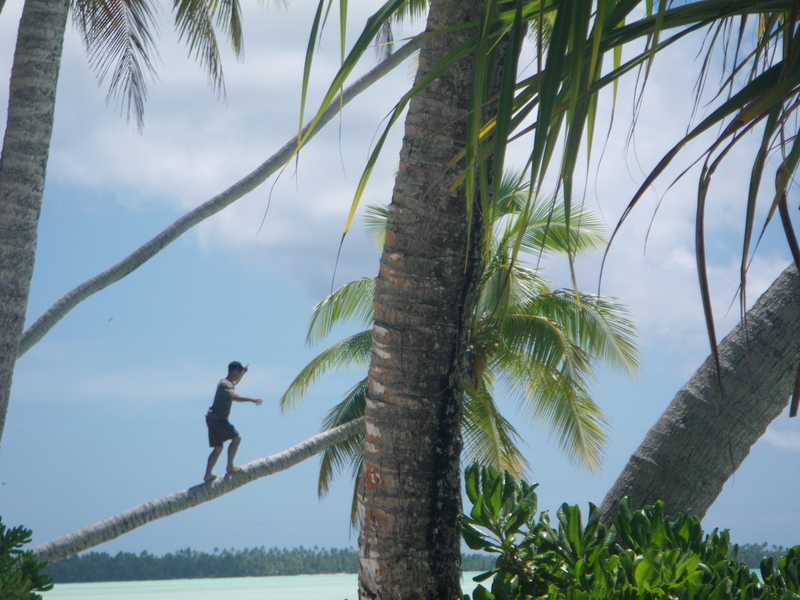


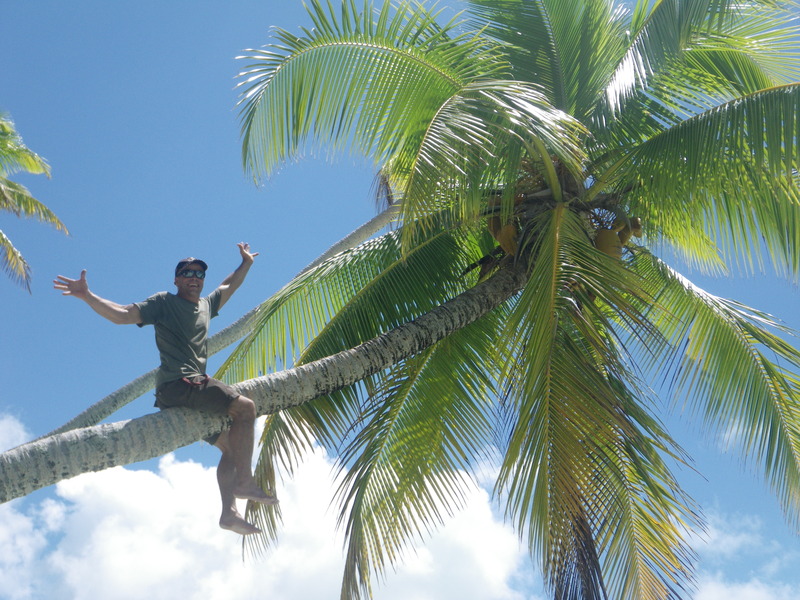
Rowing was hard work, but also good exercise.
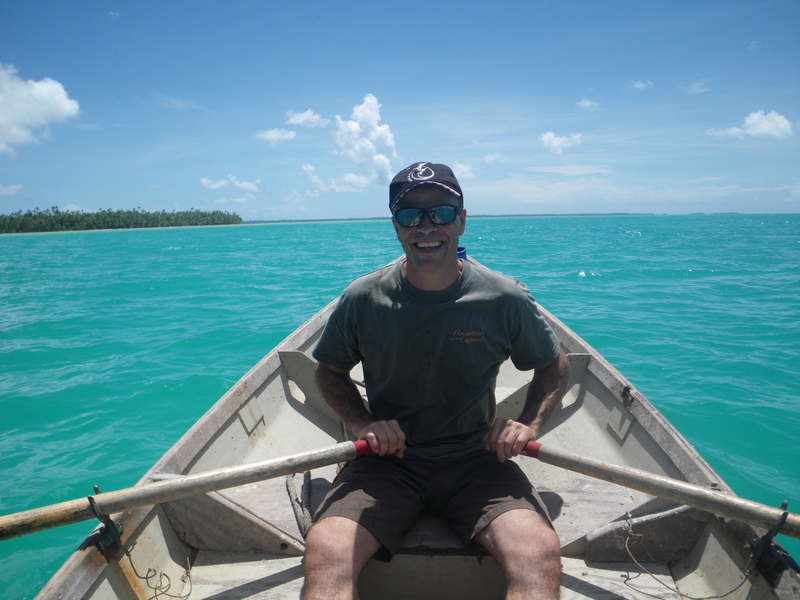

When we got to the other side of the lagoon, we did not find a pier. So we landed the dinghy on the beach and started to ask about the catholic mission. Along the way we found many interesting things, including papai and copra. Copra is coconut meat (the white stuff inside the coconut fruit) that is being dried for sale, eventually to make coconut oil and animal feed. Copra is the traditional way that these islands earn money.
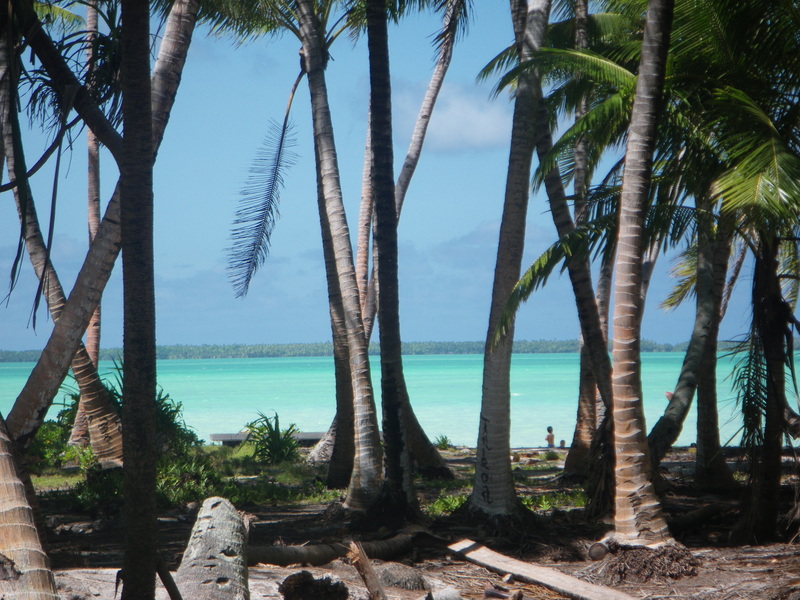
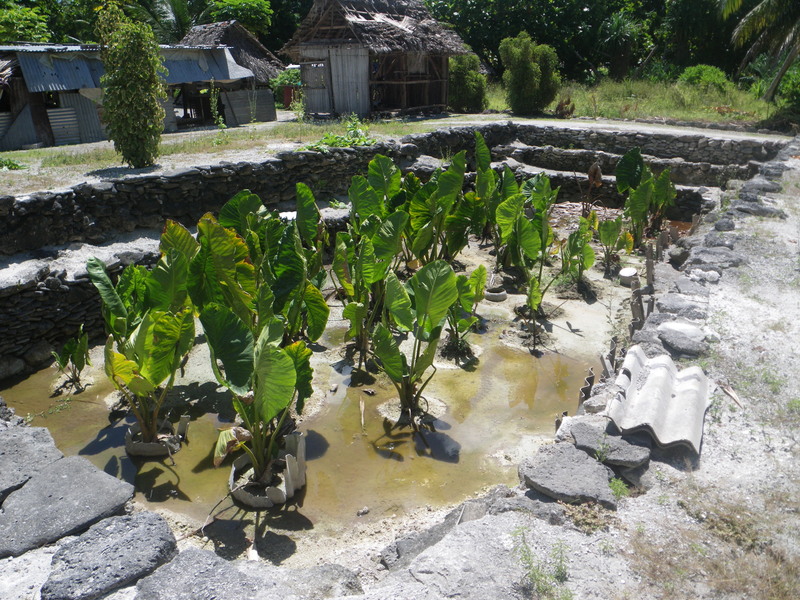
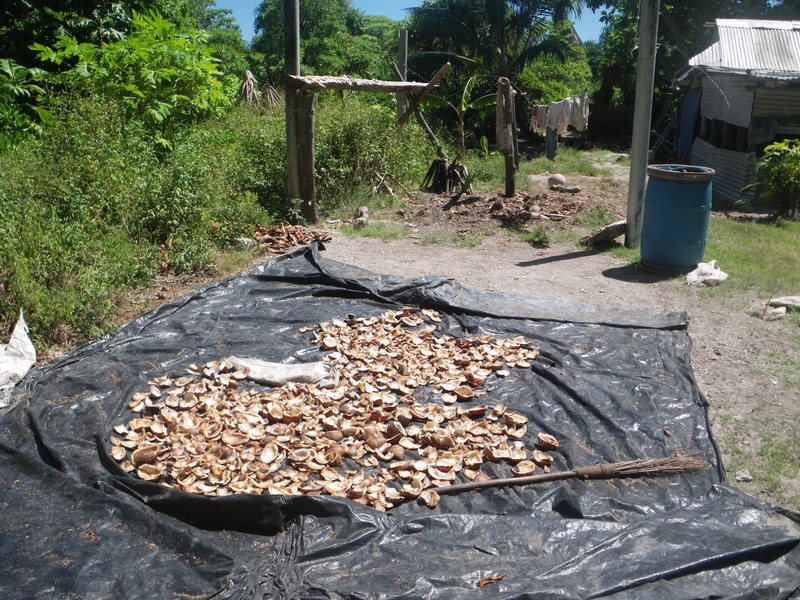
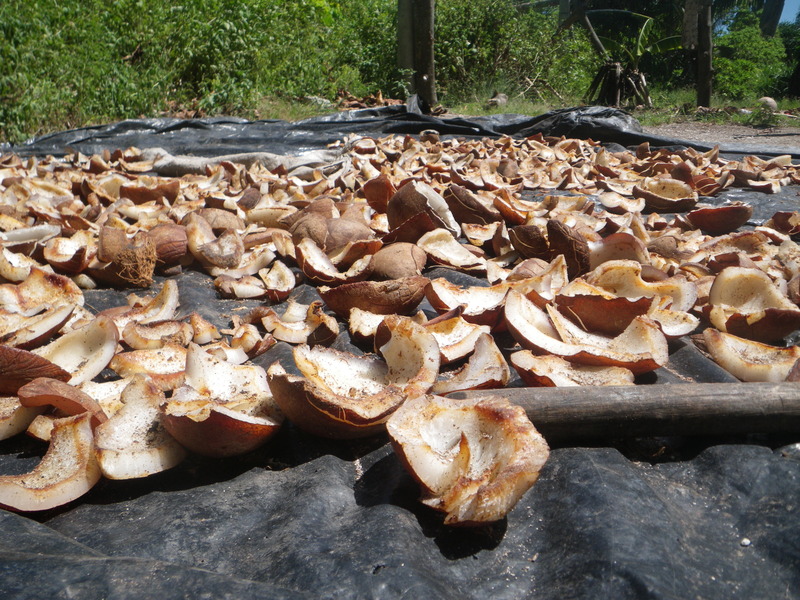

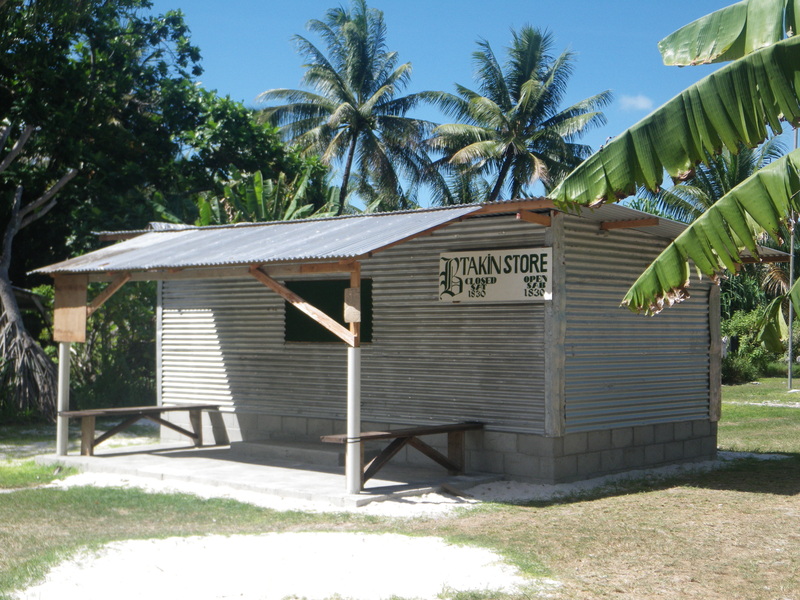

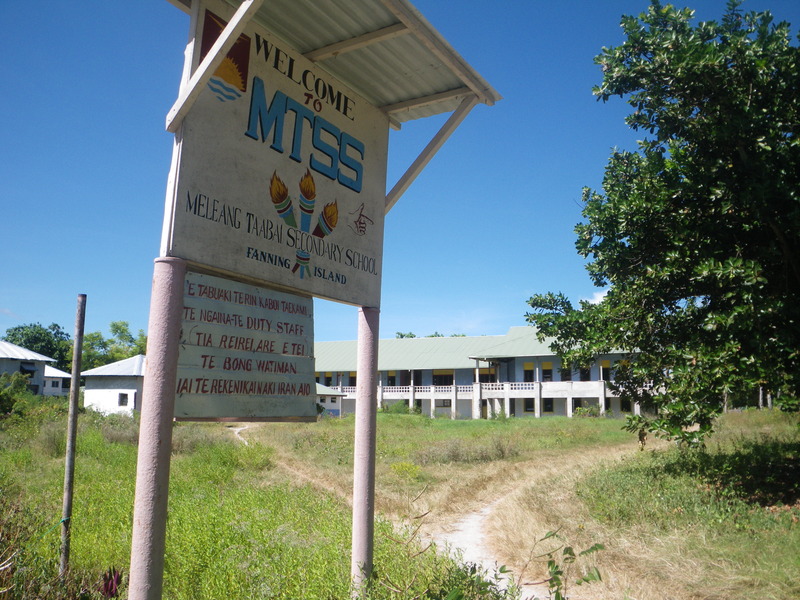

We were directed to a maniaba that was a catholic church, but they did not have a wind generator. Ben can speak a little Kiribati, and we found a teacher who could speak some English, so we managed to communicate. It was nice to sit on the concrete floor and see how these people lived. The children were very interested in these two foreigners, but we could not communicate much.
We were offered food. It looked very good, including fish, papaya, and cooked vegetables. Unfortunately there were lots of flies, so I decided not to eat. Ben ate it and thought it was very good.
At the maniaba they directed us to go down the road -- there is only one road around the island, and we started to go in the clockwise direction. We stopped at another maniaba to ask for directions. Again, they were very hospitable, and offered us green coconuts.
The juice of green coconuts is supposed to be very good. It is sterile, which I liked because I didn't have to worry about flies. It is somewhat sweet, and also supposedly has electrolytes that would help rehydrate me after the long row across the lagoon. So I was eager to drink the green coconut.
The coconut shell is hard even for green coconuts. The hard shell has three depressions, which were described to me as two eyes and a mouth. Each of the depressions is filled with soft vegetable matter, so the contents are sealed from the outside. To drink, the right depression to open is the mouth. I tried it with Ben's pocket knife, and the liquid came out under pressure and squirted me in the face! The children in the maniaba all laughed. It was funny!
I drank the juice, which was fizzy. It was almost like a natural soda, much less sweet (and less fizzy) than normal sodas.
Eventually we made it to the catholic mission with its wind generator. We inspected everything, and everything seemed to work well.
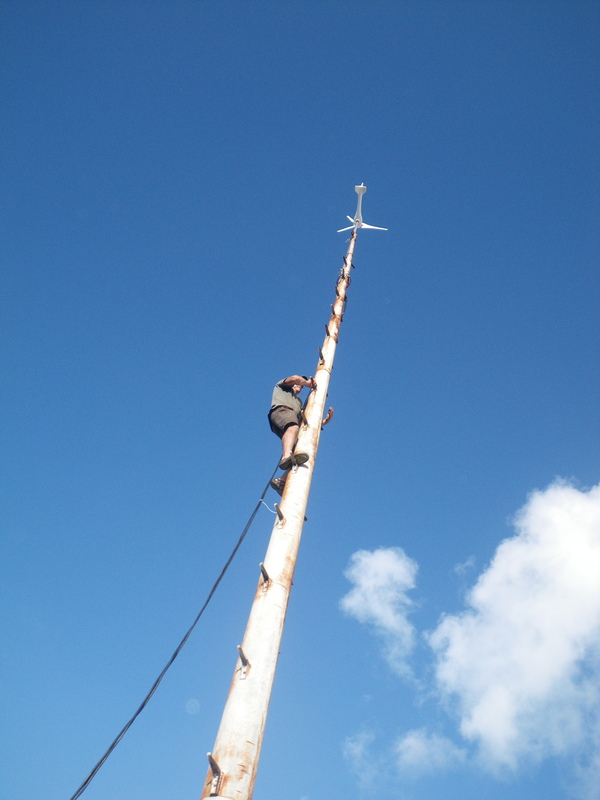

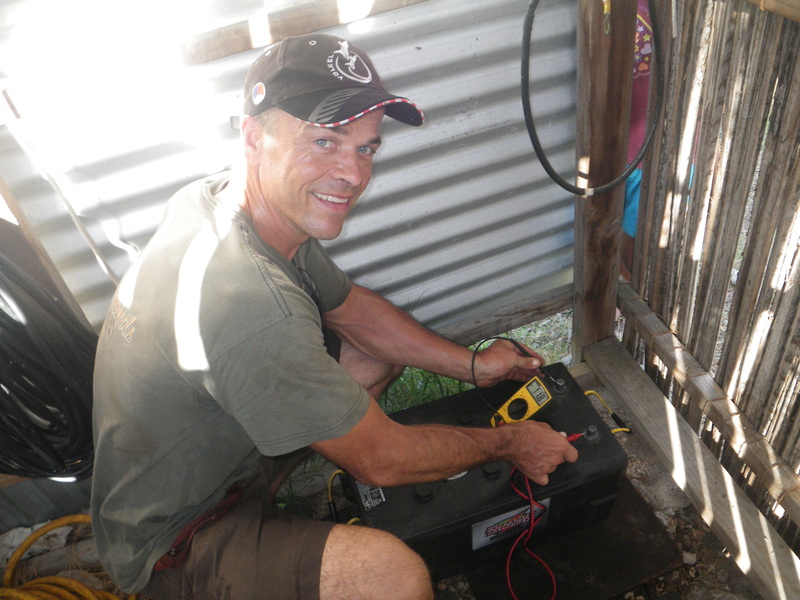
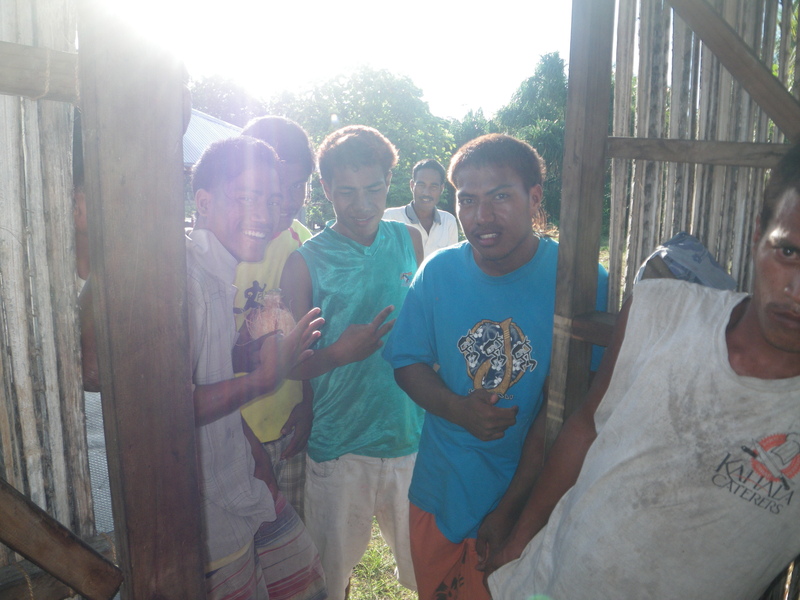
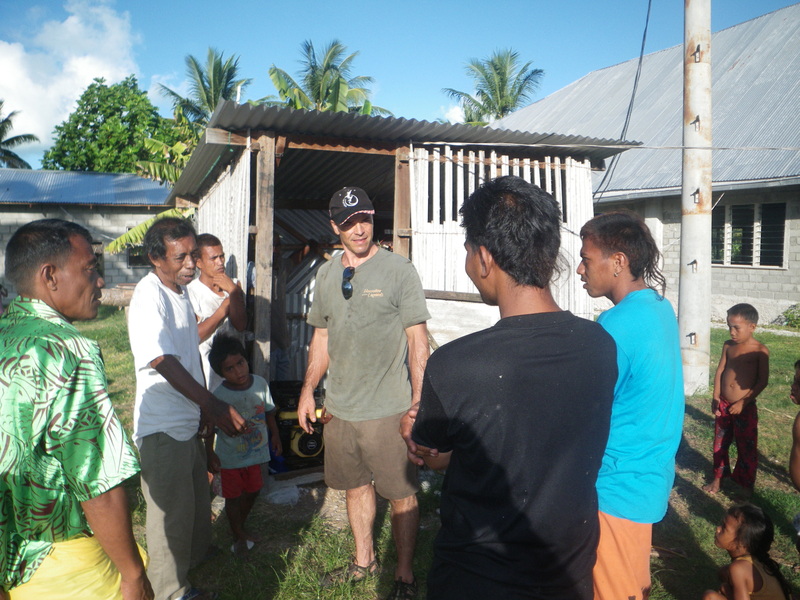
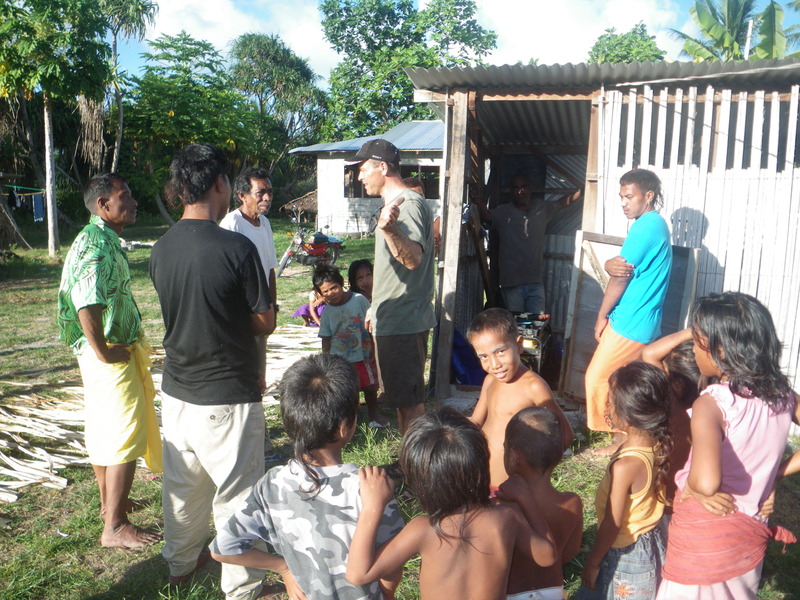
After some discussion, Ben concluded that the generator was not getting enough wind. It is installed near the maniaba that needs the energy, but the tall roof of the maniaba may also block the wind. It is also behind a number of trees that probably slow down the wind. So we were able to diagnose the problem, but not resolve it. In thanks for our efforts, we were offered a bunch of bananas.
We then started the long row back to the Kwai, as the sun was setting.
